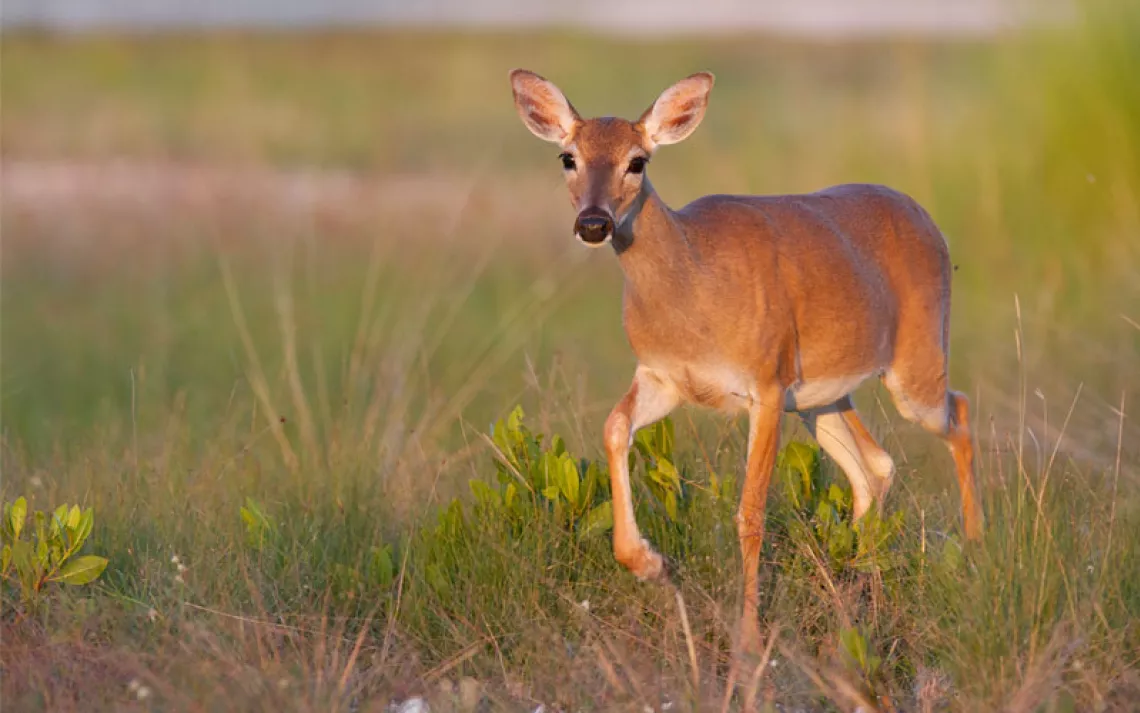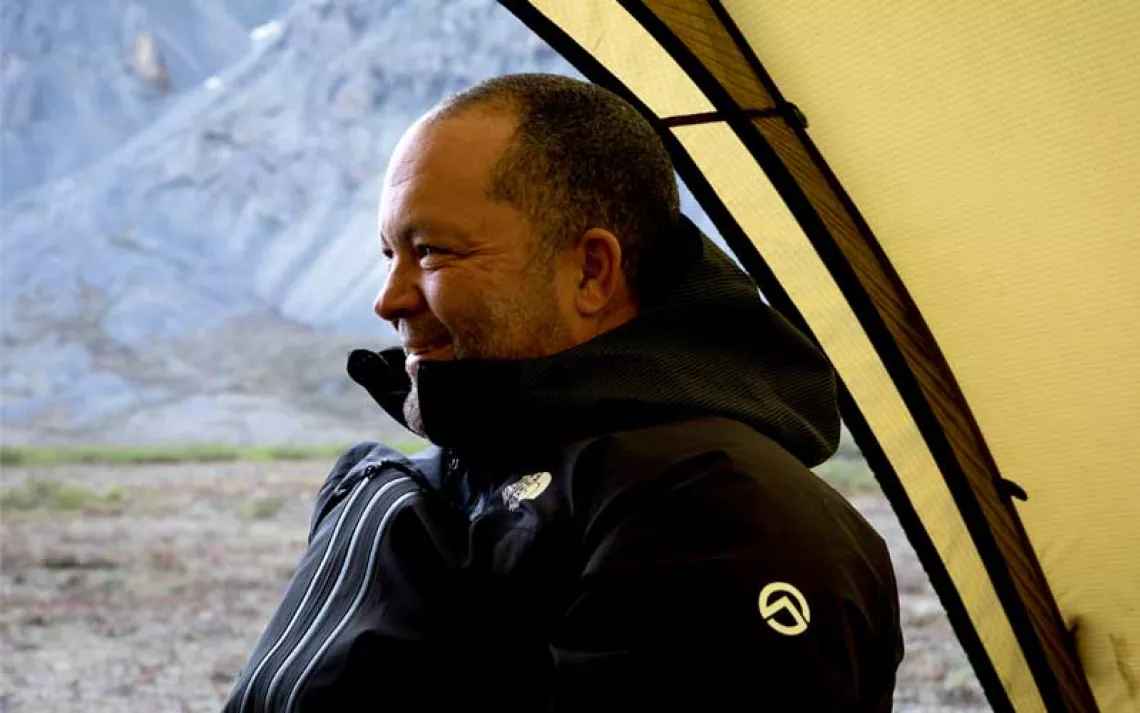Wildlife Hates Hikers
Pedestrians and wildlife don't mix, a new study says

Photo by Jim Yuskavitch
It’s taken for granted that getting out into the wilderness is great for people. What is less well known is how great it is for the animals that live in that wilderness year-round.
A survey article published recently in the scientific journal PLOS One, is a step toward analyzing what we do know. Researchers from Colorado State University, the University of California at Berkeley, and the Wildlife Conservation Society evaluated 274 studies on the effects of outdoor recreation on wildlife around the world. Ninety-three percent of the surveys showed that outdoor recreation had an effect on local wildlife; 59 percent of those effects were clearly negative, such as population declines. Even more surprising: Recreational activities like hiking, cross-country skiing, snowshoeing, mountain biking, climbing, and trail running often disturbed nearby wildlife even more than motorized recreation.
Bobcats, for example, were less concerned about nearby motor vehicles than they were of hikers. The same was true of deer and elk. “There is a greater overall reaction from animals that are traditionally hunted by humans,” explains Courtney Larson a graduate research assistant with the Colorado State University Department of Fish, Wildlife, and Conservation Biology, and one of the coauthors of the study. “They tend to respond more strongly to humans on foot.” Similarly, waterfowl are quicker to fly away when approached by humans than when approached by a car. This response bears out what wildlife photographers have known for years—a car can be an effective photo blind, as many animals don’t recognize a car as a threat until a human steps out of the vehicle. Biologists with the California-based Wildlife Research Institute have conducted hundreds of golden eagle surveys by helicopter and found the birds unfazed by the noisy aircraft, even when approached as close as 100 feet.
The disruption caused by pedestrians is partly due to how much more mobile they are. “If you are just trucking along a trail, that is not very startling to wildlife,” says Lori Hennings, a senior wildlife researcher with Portland Metro’s Parks and Stewardship Group in Oregon. “But if hikers are stopping to look around, that can be alarming.” Hennings recently conducted an extensive literature review of studies dealing with the interactions between nonmotorized recreation and wildlife. The review, which has not yet been published, found that the activities that were the most stressful to animals were also the fastest, with mountain bikers and joggers at the top of the ranking.
When wildlife are disturbed, it can cause them to waste energy and fat reserves, abandon nests and young, and move from their preferred haunts into habitat with less food, or more risk from predators. A hiker suddenly coming upon a deer or bighorn sheep will cause it to run further and faster—and expend more energy—than from an encounter with a motorized vehicle, which can be heard from a greater distance and give animals more time to move away.
One study suggests that the “steady state” noise of snowmobiles may be less stressful to mountain caribou than backcountry skiers whose silent approach may be interpreted as predators stalking them. Another researcher found that caribou often ignored snowmobiles once they identified them as the source of the noise.
The stress of being disturbed can be particularly risky during winter, when food is scarce and maintaining fat reserves can mean the difference between life and death—or reproducing versus not reproducing. Leo DeGroot, a wildlife biologist with the British Columbia Ministry of Forests, Lands, and Natural Resource Operations, has noticed that, as cross-country skiing has increased substantially in the Kootenay Pass area of Stagleap Provincial Park over the last decade, mountain caribou have abandoned it entirely during the winter. Are the two connected, or is the local caribou decline due to other factors? At the moment, DeGroot has no way of knowing for sure.
Nevertheless, motorized vehicle recreation—especially off-road—often has the greater impact on wildlife than nonmotorized recreation. Motor vehicles can travel much further and faster than people on foot, extending their negative impacts over a wider area. They compact the soil, causing erosion and damaging vegetation. They also deliver hikers to areas that they ordinarily would struggle to reach. Research on golden eagles in Boisie, Idaho, found that hikers disturbed golden eagles more than passing cars during the egg-laying period, but also noted that the hikers who annoyed the nesting eagles had driven there in the first place.
This research arrives at a time when wilderness recreation is increasingly popular. Outdoor recreation in the United States increased by 7.5 percent from 2002 to 2009, with total visitor days ballooning by nearly 33 percent. Until this point, people management in wild areas has tended to focus on enhancing the visitor experience, or limiting damage to trails, campsites, and environmentally sensitive places from overuse. However, wilderness areas and other protected places are also vital for wildlife—they provide high-elevation habitat for rare animals like wolverines and are increasingly important as wildlife connectivity corridors.
One solution is to design trails in a way that creates refuge for wildlife. On the Deschutes National Forest in Oregon, which has a large mountain biking and trail running community, the popular Peterson Ridge Trail was designed as a narrow, braided loop system, which limits how far the impacts of people using the trails radiate out into the forest. “We kept the trails in a long, narrow corridor so the zone of disturbance overlapped itself,” says Monty Gregg, Sisters Ranger District wildlife biologist. Trail users rarely see wildlife, as animals tend to move quickly through the heavy use corridor to the safety of the surrounding forest.
It’s long been assumed that setting aside undeveloped, wild areas and banning or limiting off-road vehicle recreation minimizes disturbance to wildlife. But as more hikers, bikers, skiers, and others come to play in wildlife habitat, it’s increasingly clear that muscle-powered recreation is less benign to the wild things that depend on those places than previously thought. Agencies charged with protecting wild areas will increasingly need to take that into account.
 The Magazine of The Sierra Club
The Magazine of The Sierra Club



